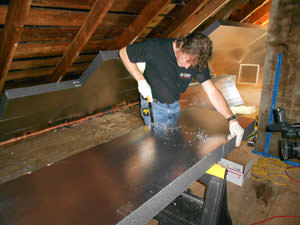In Business Since | License #
In Business Since | License #

![Spray Foam Insulation Installed In [city 4]](http://images.drenergysaver.com/321/spray-foam-install.jpg)
Best-suited for big jobs. Spray foam provides
excellent air sealing and insulation, and is often
sprayed against open framing
Remember when a pink panther held the monopoly on home insulation? Those days are gone. Today homeowners, contractors and building scientists (the experts who study home energy performance) spend a lot of time talking about foam insulation. But this newly popular insulation can come in many forms. Right now, let’s consider the differences between the spray foam and rigid foam. More specifically, we can compare the closed-cell spray foam that requires two components to be mixed at the application nozzle, and the rigid foam insulation boards that come in different thicknesses.
Both two-component spray foam and rigid foam are useful for improving home energy performance. Sometimes it can be difficult to decide whether spray foam or rigid foam is best for a particular application.
Insulation is essential for energy efficiency, and nobody knows insulation better than Dr. Energy Saver. Call or email today to arrange for a free inspection of your home’s insulation and a Free Estimate for insulation upgrades that save energy and money.

Rigid foam is easy to work with.
No respirators or special equipment are required.
Not sure which insulation is right for your home, or ready to make a decision on spray foam versus rigid foam? Dr. Energy Saver can go over the best options for your home. Schedule a home energy audit with your local dealer - contact us by clicking below!
Looking for a price? Get a no cost, no obligation free estimate.